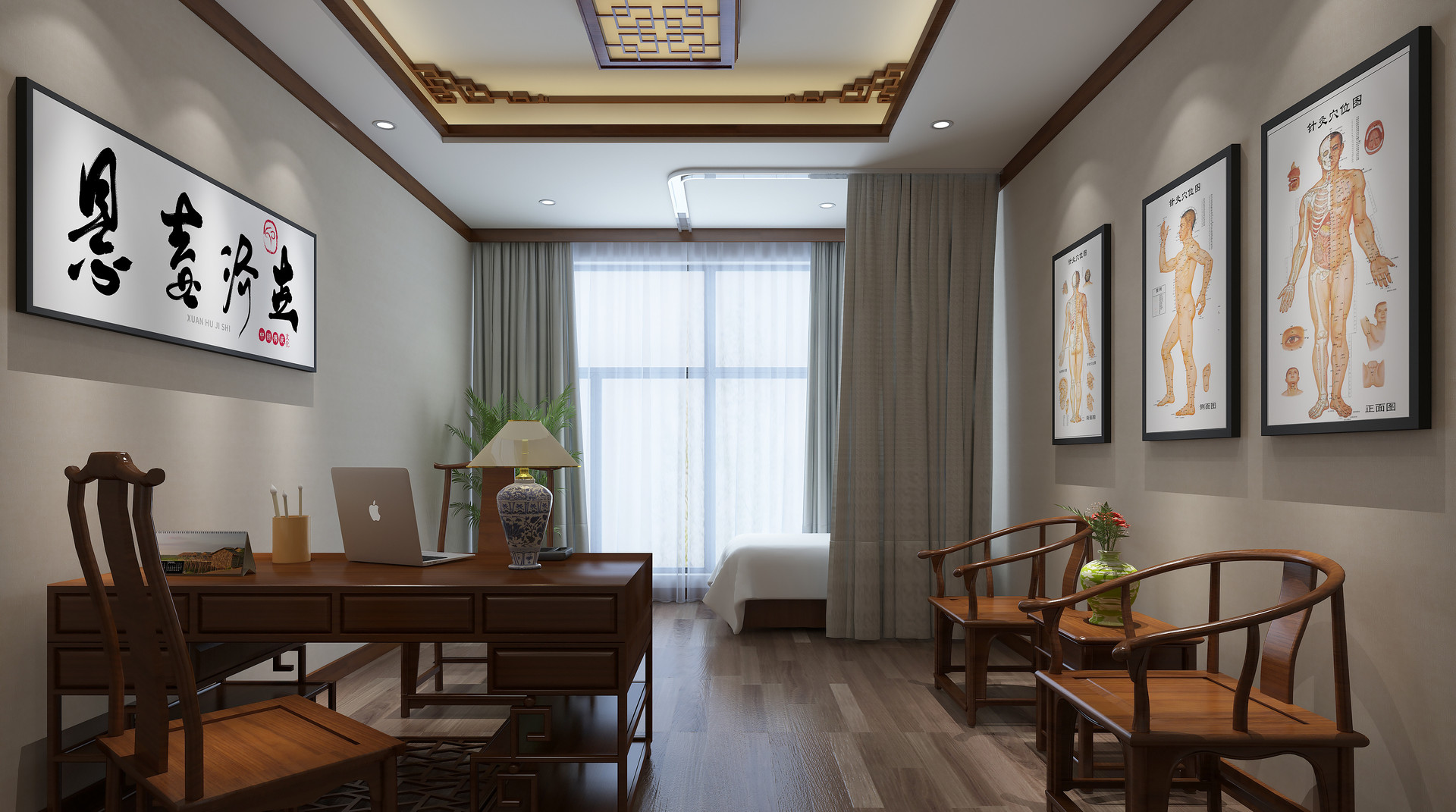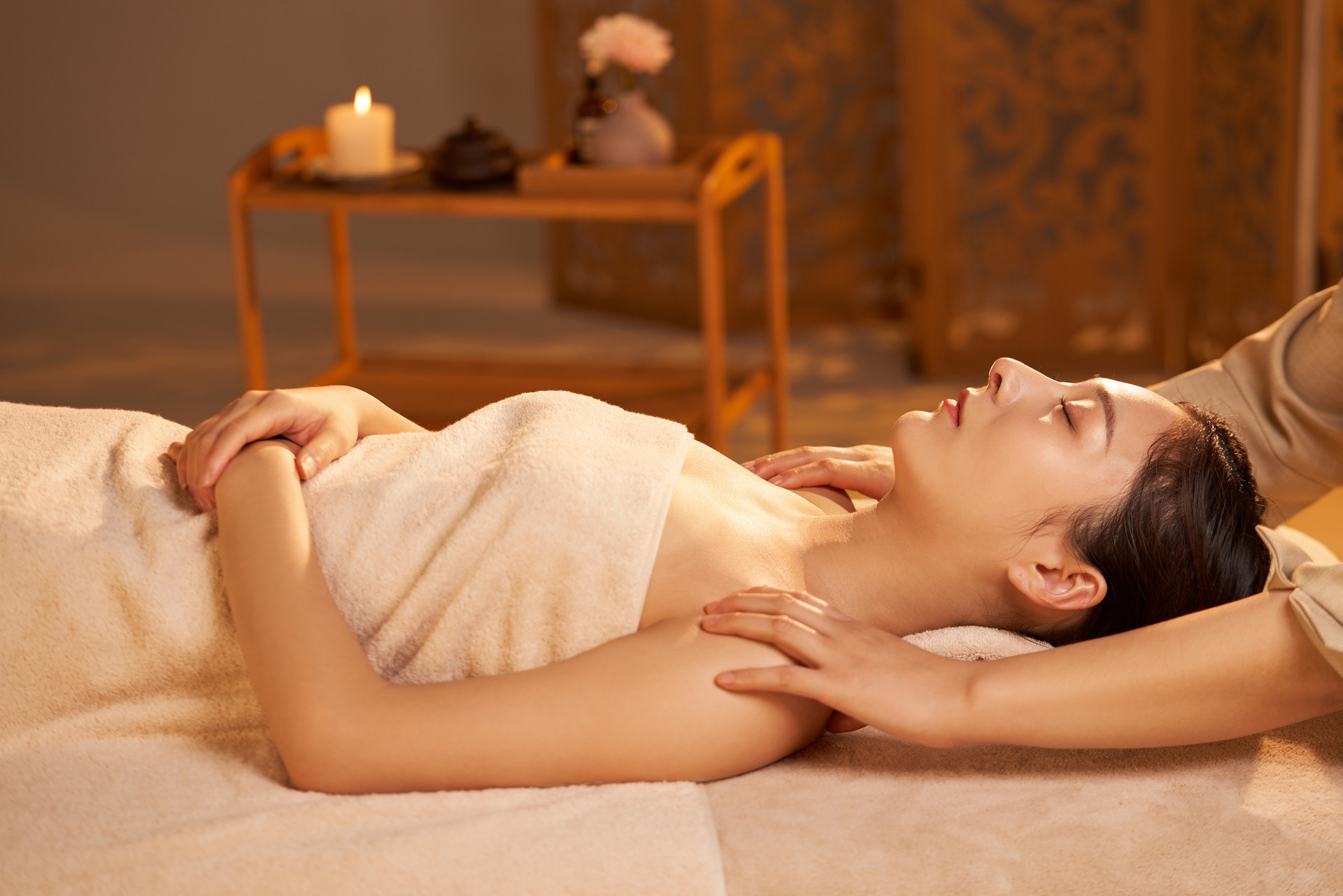1. Mo Fa Massage Therapy
Circular friction movements on the body surface using fingers or palms are called Mo Fa. The therapist lightly places their fingertips or palms on the treatment area and performs rhythmic circular movements. When using the fingertips, it is called Zhi Mo Fa; the therapist keeps their fingers close together, with the palm naturally extended and the wrist slightly flexed, using the fingertips of the index, middle, ring, and little fingers to apply pressure to the treatment area while rotating the wrist. When using the palms, it is called Zhang Mo Fa; the therapist extends their palm naturally, slightly extending the wrist joint, and places the palm flat on the treatment area, using the palm and the base of the palm as the focal points, and rotating the wrist along with the forearm, which has the effect of expanding the chest, regulating qi, invigorating the spleen and stomach, promoting blood circulation, and dispersing blood stasis. It is mainly used for conditions such as chest tightness, cough, abdominal distension and pain, and traumatic swelling and pain.
2. Ping Tui Fa Massage Therapy
Ping Tui Fa is a type of massage technique that requires a certain amount of pressure, known as "pressing and pushing on the surface." The method involves placing the thumb, palm, fist, or elbow on the treatment area and applying appropriate pressure while moving in a straight line. When using the thumb, it is called Thumb Ping Tui Fa; the therapist applies pressure with the thumb to the treatment area, moving along the meridian or parallel to the muscle fibers. The other four fingers provide support. It has the effects of clearing the meridians, regulating tendons, promoting blood circulation, and dispersing blood stasis. It is mainly used for conditions such as rheumatic pain, tendon and muscle stiffness, and delayed skin sensation. When using the palm, it is called Palm Ping Tui Fa; the therapist applies pressure with the palm, focusing on the base of the palm, and pushes in a certain direction. It has the effects of expanding the chest, regulating qi, and promoting digestion. It is used primarily for conditions such as chest tightness, abdominal distension, constipation, food stagnation, as well as back pain and muscle strain. When using the fist, it is called Fist Ping Tui Fa; the therapist clenches their fist and applies pressure with the knuckles of the index, middle, ring, and little fingers, slowly pushing in the direction parallel to the muscle fibers. It is generally performed 3-5 times continuously and has the effects of promoting blood circulation, regulating tendons, and relieving spasms and pain. It is mainly used for muscle strain and old injuries, as well as rheumatic pain with delayed sensation. When using the elbow, it is called Elbow Ping Tui Fa; the therapist flexes their elbow and applies pressure with the protrusion of the ulnar bone. It is performed slowly in the direction parallel to the muscle fibers. It is generally performed 3-5 times continuously and has the effects of dispelling wind and cold, regulating tendons, and promoting blood circulation. It is mainly used for chronic lower back and leg pain, as well as chronic lumbar and back rheumatic pain with delayed sensation.
3. Zhi Tui Fa Massage Therapy
Zhi Tui Fa is a commonly used technique in pediatric massage therapy. The therapist uses the radial side of the thumb or the index and middle fingers to apply direct linear pressure to the treatment area. It has the effects of clearing heat, relieving surface symptoms, promoting bowel movements, stopping diarrhea, calming the mind, and reducing restlessness. It is mainly used for conditions such as fever, constipation, diarrhea, and irritability.
4. Xuan Tui Fa Massage Therapy
Xuan Tui Fa is another commonly used technique in pediatric massage therapy, often used as a supplement. The therapist lightly attaches the radial side of the right thumb to the patient's acupoint and performs clockwise circular movements. It has the effects of invigorating the spleen and stomach, nourishing lung qi, and is used primarily for conditions such as weak spleen and stomach, poor appetite, indigestion, and lung deficiency cough.
5. Yun Fa Massage Therapy
Yun Fa refers to circular movements performed on the treatment area. The therapist attaches the radial side of the thumb or the radial side of the middle finger to the treatment area and performs one-way linear movements from one acupoint to another. It has the effects of clearing heat, expanding the chest, and regulating qi. It is mainly used for conditions such as fever, chest tightness, and nausea.
6. Fen Tui Fa Massage Therapy
Fen Tui Fa refers to dividing the central acupoint into two sides and performing pushing movements in opposite directions. The therapist uses the radial side of the thumb or the palm of both hands to push from the center of the acupoint to the left and right sides. It is generally performed continuously for 20-30 times. It has the effects of regulating qi and blood, harmonizing yin and yang. It is mainly used for conditions such as fever, cough, abdominal distension, and constipation.
7. He Tui Fa Massage Therapy
He Tui Fa is the opposite of Fen Tui Fa and is also known as He Fa or He Fa. The therapist uses the radial side of the thumb or the palm of both hands to push from both sides of the acupoint towards the center. It has the effects of harmonizing yin and yang and regulating qi and blood. It is mainly used for conditions such as fever, abdominal distension, and constipation.
8. Mo Fa Massage Therapy
Mo Fa involves using the radial side of the thumb or the palm to apply upward and downward, left and right, or curved movements on the body surface. The therapist applies pressure with one or both thumbs or palms on the skin of the treatment area and moves in a single direction or back and forth. The other four fingers lightly support the movement. It can also be done using the palm on the treatment area. It has the effects of opening the orifices, calming the mind, improving vision, unblocking meridians, promoting qi and blood circulation, and expanding the chest. It is mainly used for conditions such as headache, dizziness, insomnia, myopia, cold, chest tightness, abdominal distension, vomiting, belching, numbness or pain in the fingers and palms.
9. Ju Fa Massage Therapy
Ju Fa is an auxiliary technique in massage therapy, also known as "Dai Fa," "Li Fa," or "Lu Fa." The therapist flexes the index and middle fingers and uses the radial side of the second joint of the index and middle fingers to clamp the skin. It involves continuous pushing and rubbing. The patient sits while the therapist stands behind them, with both hands open, using the thumbs symmetrically on both sides of the patient's occipital bone, and the index and middle fingers flexed, applying pressure with the radial side of the second joint of the index finger, closely attaching to both temples, and making a curved pushing and rubbing motion towards the sides of the occipital bone. Massage and rubbing can also be done at the temples and occipital bone. It has the effects of clearing the mind, improving vision, and dispelling wind and unblocking meridians. It is mainly used for conditions such as headache and insomnia.
10. Sao San Fa Massage Therapy
Sao San Fa involves sequential rubbing movements on the cheekbone area. The patient sits while the therapist stands facing the patient. One hand supports the patient's head, and the other thumb is extended, with the radial side of the thumb pressed against the hairline at the temple; the other four fingers are flexed and placed on the high bone behind the ear, with the index finger aligned with the upper edge of the ear. The radial side of the thumb and the fingertips of the other four fingers are used as the contact surface, and then with some force, a relatively fast forward single-directional pushing motion is made on the forehead area, allowing the thumb to move within the range from the hairline at the temple to above the ear, and the other four fingers to move within the range from behind the ear to the mastoid process. The motion is alternated between left and right, approximately 50 times on each side. It has the effects of calming the liver, sinking yang, awakening the mind, and dispelling wind. It is mainly used for conditions such as headache, dizziness, and insomnia.
11. Le Fa Massage Therapy
Le Fa is an auxiliary technique in massage therapy, also known as "Dai Fa," "Li Fa," or "Lu Fa." The therapist flexes the index and middle fingers and uses the radial side of the second joint of the index and middle fingers to tightly press against the skin. It involves continuous pushing and rubbing.












